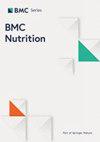膳食总抗氧化能力与中风风险之间的关系:一项巢式病例对照研究
IF 1.9
Q3 NUTRITION & DIETETICS
引用次数: 0
摘要
缺血性中风后的氧化应激会导致神经细胞损伤。不健康、不均衡的饮食模式会增加罹患多种疾病的风险,包括中风和心血管代谢疾病。然而,膳食中抗氧化剂的总抗氧化能力(DTAC)与中风之间的关系还存在争议。我们的研究旨在确定 DTAC 与中风发生之间的相关性及其对中风发生的影响。这项巢式病例对照研究包括 79 例中风病例和 158 例健康对照。我们使用的数据来自法萨成人队列研究(FACS),基线人数为 10,035 人。为了评估每个人的营养状况,我们使用了 125 项食物频率问卷(FFQ)来评估他们过去一年的饮食习惯和摄入量。DTAC 采用铁还原抗氧化能力(FRAP)国际数据库进行计算。中风由经验丰富的神经科医生使用标准成像方法确认。为评估 DTAC 与中风之间的关系,进行了条件逻辑回归分析。对 DTAC 的评估显示,病例(平均值 ± SD:5.31 ± 2.65)与对照组(5.16 ± 2.80)之间没有统计学意义上的显著差异,P 值为 0.95。即使调整了年龄、性别、事件发生时间、能量摄入、吸烟、高血压和糖尿病等潜在的重要混杂因素,两者之间的联系仍然不显著(调整后的几率比(OR)= 1.06,95% CI:0.94,1.20,P 值 = 0.33)。我们的研究结果并未证实 DTAC 与中风风险之间存在显著联系。这些发现强调了影响中风风险的各种因素之间错综复杂的相互作用,并突出了进一步研究以更全面地揭示这些关系的必要性。本文章由计算机程序翻译,如有差异,请以英文原文为准。
Association between dietary total antioxidant capacity and the risk of stroke: a nested case-control study
Oxidative stress after ischemic stroke contribute to neuronal cell injury. Unhealthy and unbalanced dietary patterns can increase the risk of several diseases, including stroke and cardiometabolic ones. However, the association between dietary total antioxidant capacity (DTAC) of antioxidant and stroke is controversial. Our study aimed to establish a correlation between DTAC and its impact on the occurrence of stroke. This nested case–control study included 79 stroke cases and 158 healthy controls. We used data from the Fasa Adults Cohort Study (FACS) comprising 10,035 individuals at baseline. To assess the nutritional status of each individual, a 125-item food frequency questionnaire (FFQ) has been used to evaluate their dietary habits and intakes over the past year. DTAC was calculated using the ferric-reducing antioxidant power (FRAP) international databases. The stroke was confirmed by an experienced neurologist using standard imaging methods. Conditional logistic regression analyses were performed to evaluate the association between DTAC and stroke. The assessment of DTAC revealed that there was no statistically significant distinction between cases (mean ± SD: 5.31 ± 2.65) and controls (5.16 ± 2.80) with a p-value of 0.95. Even after adjusting for the potentially important confounding factors such as age, sex, event time, energy intake, smoking, hypertension, and diabetes, the association remains non-significant (adjusted odds ratio (OR) = 1.06, 95% CI: 0.94, 1.20, p-value = 0.33). Our results did not confirm a significant link between DTAC and stroke risk. These findings emphasize the intricate interplay of factors influencing stroke risk and highlight the need for further research to unravel these relationships more comprehensively.
求助全文
通过发布文献求助,成功后即可免费获取论文全文。
去求助
来源期刊

BMC Nutrition
Medicine-Public Health, Environmental and Occupational Health
CiteScore
2.80
自引率
0.00%
发文量
131
审稿时长
15 weeks
 求助内容:
求助内容: 应助结果提醒方式:
应助结果提醒方式:


